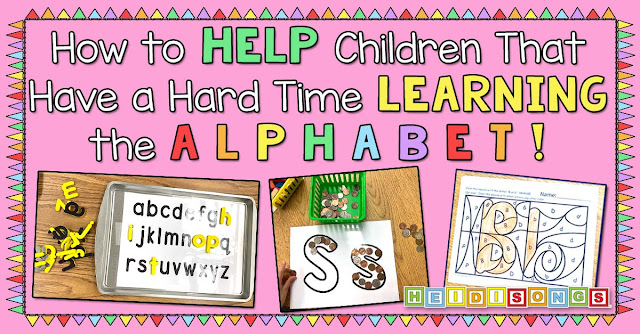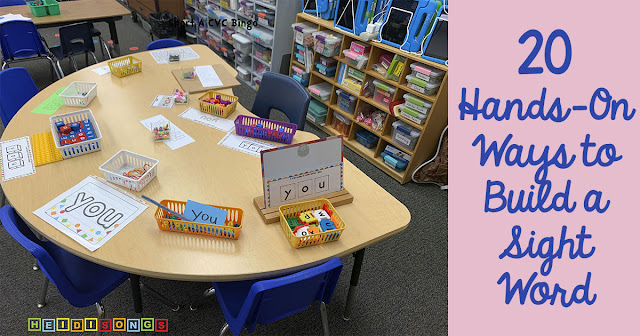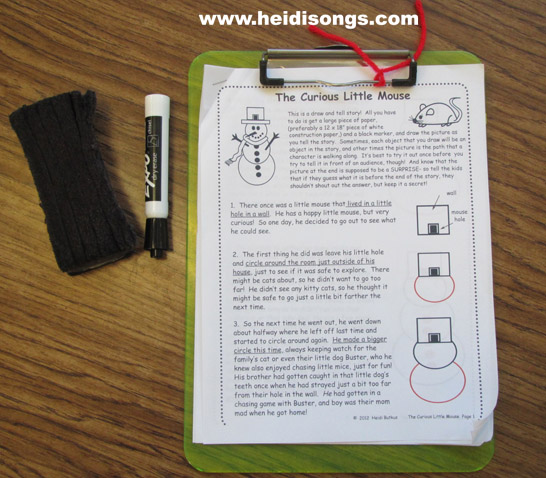What to Do When A Child Won't Go To Time Out
Have you heard the news? We've Moved to HeidiSongs.tv!
Our new website features an online video streaming service, updated blog posts at Heidisongs.blog, and a wealth of fresh resources designed to make learning even more fun and engaging.
You can also continue shopping for our educational products there and at our Teachers Pay Teachers store!
Head over to HeidiSongs.tv now and explore all the exciting new features.
See you there!
__________________________________________________________________________
What should you do when you tell a child to go to time out, but the child refuses to go? There are few things that are harder to deal with as far as discipline problems are concerned, in my opinion. This question was recently asked of me on my HeidiSongs Facebook page, and because it is such a difficult issue to deal with, I thought that I would post my response and of some of the other responses here. It was also the topic of part of my classroom management presentation at the SDE Missouri Kindergarten Conference that I was at last Tuesday, and the Alabama Kindergarten Association Conference last week on Saturday! So the topic is on my mind at the moment. I would love to hear from more of you if you have other ideas to contribute! As far as I am concerned, the more ideas and experiences that we all have to draw from, the better! By the way, if there are any other questions you would like me to tackle, please feel free to leave a comment below or post it on my Facebook page!

I also would like to mention that there is now a great new blog that is written by a teacher that has been working with emotionally disturbed special education children for 20 years! It's called Teaching Through Turbulence, and the author, Heather, tackles some very difficult situations and tells how she has dealt with them through the years. She also takes questions from teachers that are struggling and are looking for help. I highly recommend it!

Also, our Classroom Management DVD is DONE and now posted on our website here. Here is a clip from it. I hope you enjoy it! I find that a bunch of the songs on it are extremely helpful, such as "I Can Follow the Rules," "The Tattling Song," "No Interrupting," "Is It a Question or a Story?" and the "Glue Song" ("Just a dot, not a lot! One dot!")
What Do You Do When A Child Will Not Go To Time Out?
Here is the basic gist of what I do when children refuse to go to time out when they are told, and there is no doubt that they really MUST go (such as if the child is openly defiant or disrespectful to the teacher, another adult, or hurts another child.) Please keep in mind that this is for major problems; I do not do this for "every little thing."
1. I first keep insisting that he or she go, like a broken record.
2. Give the child a choice to go now or later.
After I ask the child a few times to go, I make it clear that the child has two choices: to go now for five minutes, (and tell them that's not much time), or to go later for a long time, usually giving up ALL of playtime or recess.

3. Ask the other children to help the child decide which he or she should choose.
Usually they will all start saying, "Just go NOW!" Ask the other children what they would like to play during playtime with the offending child. Ask them to invite that child to play with them later. Then tell the child that he won't be able to do it unless he goes to time out now.
4. Let the child know it's okay if they choose to take a long time out later.
If he or she still won't go, let them know that you will not forget, and that it's okay with you that they chose to give up all of their playtime later instead of a little time now.

5. Try not to show that you are mad, or you will have let the child "win."
Sometimes, kids are looking for that big reaction, and if you reinforce that, this is more likely to happen a second time.
6. Make sure you don't forget to follow through later.
Make sure that you do not forget later to put the child in time out if you said that it could wait. Put your "biggest tattletale" in charge of helping you remember, and write yourself a note or set a timer. The follow through is very important if you don't want to go through this every day!

7. Let the child take the time-out later right where they are.
Later, if the child will also not go, then tell the child that right where he or she is sitting is now their time out spot. Pull up a chair and sit by them. Make sure that they don't touch any toys and tell the children that no one can play right there nearby.
8. If a child will not stay there, and gets up to walk around or move away, then call the office and ask for help.
Luckily for us, at our school we have an elementary school counselor that will come get children and sit and talk to them about behavior issues. She has actual lessons worked out that are grade level appropriate for many situations, so she will sit and try to TEACH the child about what went wrong and about making better choices. She is a fabulous resource but is there only four days a week rather than daily. So on some days, she is not on campus, and then of course, she is often quite busy with students from other classes!

9. Consider calling the child's parents for back-up.
Another thing I have done is call the parents for help right then and there, on the spot. Tell them about what has happened and ask them for advice on how to handle their child. Usually, they ask to speak to the child. Once the child knows that mom or dad is on the phone, they immediately become compliant and start crying, and come to the phone. The parent tells them what to do, and that is the end of that. There have been other extreme situations in which the child still did not comply, but usually, this works for me.
An Example From My Experience
One year, I had a little boy who would become very agitated whenever I told him he had to go to time out; it almost became like his "mantra:" It was almost as if his thought process was, "If I refuse to GO to time out, then I didn't actually go, and therefore, I had no time-outs today." There was almost no reasoning with him; he simply didn't get the logic- or so it seemed. He just kept insisting that his mom didn't want him to go to time out, and neither did his dad, and so he wasn't going.
About halfway through the year, I decided to try to desensitize him to hearing the words "Go to time out," "or go to a chair" so that he could go quietly for five minutes without freaking out and stop turning gigantic mountains out of molehills. Because really, we had gotten his behavior under control to the point that he was doing only very small things wrong; just occasionally he would make a choice bad enough that I felt forced to send him to a chair. (Believe me, I tried to avoid sending him as much as I possibly could!) So one day when he had turned a small five minute time out during a lesson into a 20 minute loss of playtime while sitting in a chair.

At that point, I decided to spend his minutes in time out training him to actually go to time out when I said so! So we spent that time, having him hear me say, "Go to time out. (Then I waited until he went.) Then he sat in the chair for about thirty to sixty seconds, and then I asked him, "Who is in charge?" Then he would answer, "You are." Then I praised him for "doing it all right," and then I said, "Okay, go sit on the carpet." (Then I waited while he sat down in his regular spot on the carpet and I had him stay there for a minute.)
Then we started again from the beginning, having him follow my directions to go to time out, tell me who was in charge, and then go back to the floor. Each time he did it, I praised him quite a bit for doing it, and then we did it again. I probably had him practice this five times or so, as I recall. After this, things were much better, and there was only one more instance of this type for the rest of the school year.
There were quite a bit of other great responses on my Facebook page, and I thought it would be useful to post them below. If you have other suggestions, ideas, or experiences that you would like to share, or questions to ask, please feel free to leave a comment below. Thanks!

************
Lisa Garber Flanagan
I'm interested in hearing the answers. I teach 3s. Generally if they won't sit in time out, or the thinking chair, I just have to threaten a call to mom or dad. They don't want to get "told on."
Donna Wadzeck:
I use a power chair....I ask them to sit in the chair and get their power back so they can rejoin us.... It's worked really well!!! After a time or two, all it takes is asking "Do you need to get your power back?" The other day my most difficult 3 year old was able to regain his power while sitting at the table with us after I asked him that question...so it does work.... There have been times that I have had to sit in a small chair next to one in order to help them remember they must stay in the power chair until their power returns.

Kim Houston Kirkpatrick
I do two different things. One is calling time out the thinking chair or think about it chair. Many of them come with homes where battles have been fought for year over time out. I just change the wording to reduce battles. Also, I usually give two choices: you can sit in time out (thinking chair) now or at recess; you can sit in time out (thinking chair) here or in Mrs. Perkins room; you can sit in time out (thinking chair) now or during lunch, etc. By taking the battle out of the situation and letting them choose when/where it works for me 90% of the time.
I usually only give choices when they are fighting me over it. Otherwise, I say, "You need to go think about your choices and then we can talk."
Adrienne Choma Sodemann
You have to find out what is making them do the poor behavior... Are they trying to get attention? Is the work too hard?, etc... Then change things up. Give them positive attention when they are doing the right thing or simplify their work and reward them for doing it and slowly increase it to what they can handle. In kindergarten sometimes we have students that are unidentified with disorders, like emotionally disturbed, behavior disorder, even autism. This approach to behavior is called ABA...applied behavior analysis. It works!
Gretchen Witkowski
I do what Jo the SuperNanny does: sit them in the spot and say, "You are in time out because..." then walk away. If they get up, silently walk them back and sit them back down again and walk away. Repeat 63 times if necessary until he/she sits for their 3 minutes (or however old they are). It usually only takes about 2-3 times of doing this for a time out before they realize, holy crap, she's not going to give up! I'd better just sit here and do my time. I've taught 3-5's for 6 years and have a 5 year old of my own. Well practiced in this technique!

Donna Wadzeck
Agreed! They have to realize that you mean business. Too often (I taught for 36 years) these days children hear adults say "do this," "do that," "I mean it," and "I'm not going to tell you again," but never follow through so they learn at a very early age that the bigger the fit they throw the quicker they get what they want or get out of doing what they want.
Bethany Charlebois Arsenault
Love and Logic, and if they are out of control after 3 reminders, they are sent to see the school counselor or principal to call home. We have a school rubric we all follow.
Wendy True Watson
Heidi I do pretty much the same thing, but I do love the power chair idea and will be implementing that ASAP.

Deborah Hoffmeyer
I do not use time out. I invite the child to do an activity away from the others. I also have special activities; books, puzzles, etc, that I save just for a child who needs to unwind or relax.
Tracie Alexander Maurer
I have used the thinking chair with success. I have mixed success bringing he class in on the child's "good choice vs bad choice" decision. I allow the children to give their friends "reminders" as to good behavior but you in the risk of growing little tattlers or bosses. It's a fine line. I sometimes prefer to talk to a child in private about their behavior if it's a child with low self-esteem.
Elizabeth Lysa Vaughn
I've gotten good ideas from Heather's Heart (blog) which has a focus on the "Conscious Discipline" program. She suggested giving two positive choices and I tried it last year with some success. For example (picture child under table having a fit and refusing to come out)... "J. your choice is to sit in your chair or sit in the calm down area." My student usually wouldn't respond the first time, but I would wait a few seconds and calmly repeat it and he would finally comply. I just ordered the book. It was a bit expensive, but I'm hoping it will be helpful.

The comments below are from my Google+ page.
***************
Andrea Hardman
I had this situation last year and used the same strategy - the principal would then want the student to come to the office, and the student refused to go So the principal would have to come and get her. What a challenge!
Leea (luvzenkms)
Give them 3 counts (1, 2, 3) then call the principal or a designated person for intervention. Bigger schools have teams to call, as it is taking time away from your classroom and the other students.
Michelle Divkey
Friday Fun Day has probably been the best strategy I've found with discipline problems. Here's a link to my post: Friday Fun Day
Carol Cobb
Depends, why are they behaving poorly? What are they wanting? Once you figure that out, you can address that need and really help fix it. A lot of times the kid is better if I just duck out the door and have a quick, calm, not mean talk. Other times they are being whiny thinking that's special and will get everyone to pity party with them, so I cue the whole class to baby whine even worse... That fixes that, LOL!
Lori Rosenberg
I believe whole heatedly in 1-2-3 Magic and, if followed correctly, this will work almost 100% of the time. Here is a post I did on this system: Clip Chart Behavior Management Plan
Kim Amanda
I think it depends on the age and the individual student. There are kids that I have taught that would resist a "time-out" but would walk an 8 (brain gym) in the back of the room or sift their hands in a container of rice. Each kids is so unique and it is important to have a team of people who care about the child to come up with solutions; parents, BRT, counselors, and the primary teacher should all be involved. There are a lot of preventative ideas that may help prevent the need for removal. I rarely ever used a time-out in kindergarten with 26 children. Amanda
----------------------------------
Follow me! Did you enjoy this post? Do me a favor and share it with your friends! And follow this blog by signing up for my email updates here, or follow on Bloglovin', or follow me on TPT! I'm also on Pinterest, Facebook, Twitter, Instagram, Google+ and YouTube, too! Don't forget to sign up for our email newsletter for special deals and promo codes that you won't find out about anywhere else.










